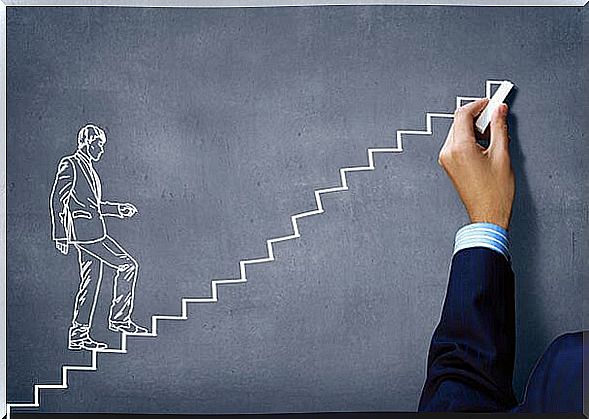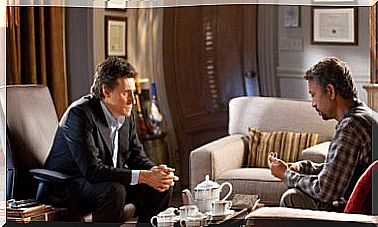The Motivational Interview: Helping People To Change

Few methods have seen such dramatic advancement in such a short time as the motivational interview. Its success is due to several factors: it facilitates the relationship with the patient, its effectiveness is scientifically evaluated and it has been developed collaboratively. Currently, the motivational interview is applied to a great variety of contexts and depending on them, the recipients of the motivational interview can be clients, patients, students, ward, addicts, criminals or interns.
Similarly, those who practice motivational interviewing can be mentors, educators, therapists, coaches, psychologists, doctors or nurses. This makes this tool so powerful.
What is the motivational interview?
Broadly speaking, we can understand the motivational interview as a tool for people to change what they do not like about them. That which produces a great dissonance, and therefore, displeasure. This is achieved through conversation with the interviewee. Through this tool we manage to break down the barriers that prevent or hinder people from changing.

The truth is that we talk about change every day and naturally. We make requests of others and are very sensitive to aspects of everyday language that denote reluctance, willingness, commitment … In fact, apart from transmitting information, one of the most important functions of language is to motivate and influence the behavior of the other. It can be something as simple as asking someone to pass us the salt or as complex as negotiating an international treaty.
There are also conversations about the change that happen in the form of a professional consultation. Through them, one person tries to help another to change. Doctors, dentists, nurses, dietitians, and nutritionists also have conversations about behavior and lifestyle change.
The motivational interview pays attention to natural language about change. Its purpose is to have more effective conversations about it. This is especially intended when they occur in a context where someone offers professional help to another person.
Many of these conversations unfold in a useless or dysfunctional way, no matter how good the interviewer’s intentions may be. Thus, the motivational interview is designed to find a constructive way to overcome the challenges that appear when someone enters the motivation for change of another person.
Specifically, the motivational interview consists of organizing conversations. In this way people can persuade themselves to change, based on their own values and interests.

Communication styles
We can think of help conversations as if they were situated along a continuum or segment. At one extreme we find the managerial style. At the opposite extreme, we find the accompaniment style. The center of this continuum is governed by the guiding style, which is the one that follows the motivational interview model. To better put ourselves in this situation, let’s imagine that you travel to a foreign country and hire a guide to help you.
The guide’s job is not to tell you when to get there, where to go, or what to see or do. A skilled guide knows how to listen and offer expert information when necessary and based on your interests. The motivational interview is situated in this intermediate territory between directing and accompanying and includes elements of both. Guiding is a task in which many times it is necessary to accompany, others to direct and others not to do either of the two things, leaving freedom or opening the range of possibilities that the guided person is capable of perceiving, and interspersing these three attitudes with intelligence.
For example, stimulating a child’s learning most of the time implies that we act as guides. It demands that we intersperse periods of accompaniment or supervision, with others of direction and with others of freedom.
Avoiding the correction reflex is essential in the motivational interview
People come to practice a profession in which they help others for different reasons. It can be for wanting to give something back to society, prevent and alleviate suffering, manifest love for God, etc. Ironically, these same reasons can lead to excessive use of the managerial style in providing this assistance. When, beware!… The managerial style can become ineffective or counterproductive when we want to help people.
When we use the directive style we also use the correction reflex. We want to help the person so much that we often impose what he should or should not do. But this, unfortunately, creates resistance. Precisely one of the objectives of the motivational interview is to minimize these resistance.
What is not the motivational interview?
It can be helpful to clarify what motivational interviewing is not and to differentiate it from other interviewing methods. The motivational interview is not simply about being nice to others. Nor is it the same as Carl Rogers’ client-centered therapy. In the motivational interview there is an intentional and strategic movement towards one or more specific objectives.
The motivational interview is also not a “technique”, an easy-to-learn trick that we can simply add to our toolbox. Rather, it is a style of being with others, an integration of concrete clinical skills that promotes motivation for change.

It is a complex style that can be perfected over the years. Nor is it the panacea or the solution to all clinical problems. The motivational interview was developed specifically to help people resolve change ambivalence and reinforce their motivation.
Five key communication skills are used throughout the motivational interviewing process. These skills are as follows: ask open-ended questions, affirm, reflect, summarize, and provide information and advice, always with the client’s permission.
As we have seen, the motivational interview is a powerful tool that facilitates change in people. It weakens the ambivalence before it and encourages motivation. All this is possible through a communicative style of guidance, without imposing anything and leaving the client to decide.









